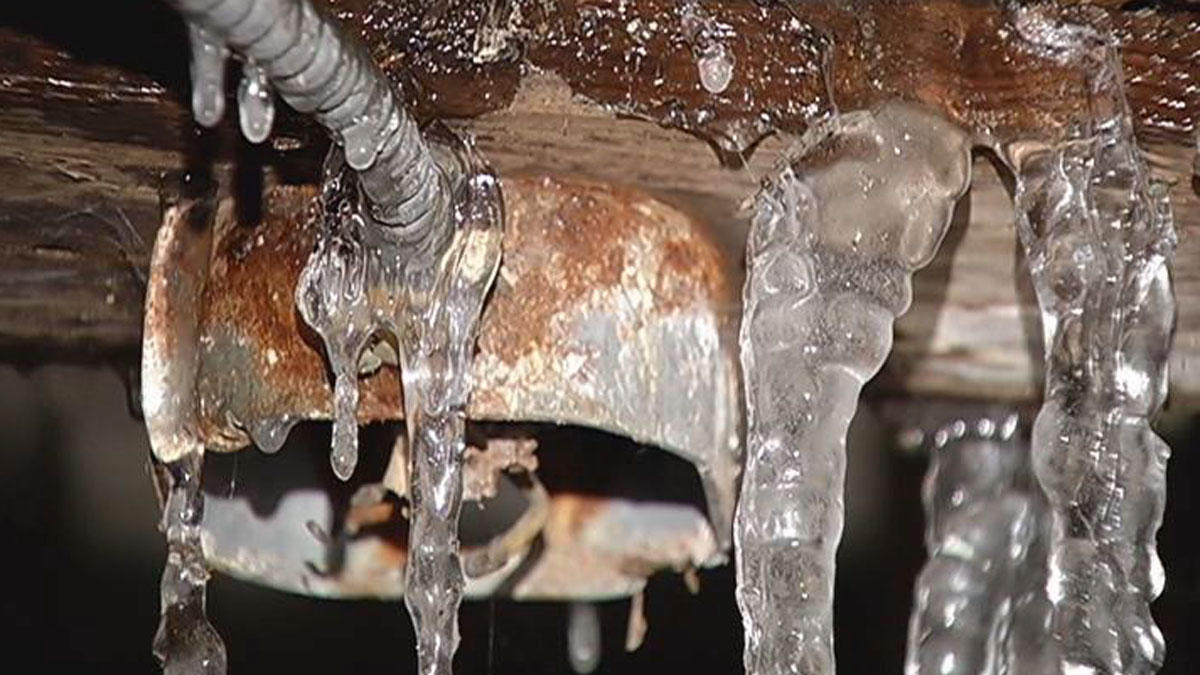Presented here underneath you will find some great data relating to How to prepare your home plumbing for winter weather.

Winter can ruin your plumbing, especially by freezing pipelines. Below's how to avoid it from taking place and what to do if it does.
Intro
As temperatures drop, the threat of icy pipes rises, possibly bring about pricey repairs and water damage. Comprehending how to prevent frozen pipes is important for home owners in chilly environments.
Prevention Tips
Protecting vulnerable pipes
Cover pipelines in insulation sleeves or make use of warm tape to shield them from freezing temperature levels. Concentrate on pipes in unheated or outside locations of the home.
Heating strategies
Keep interior spaces sufficiently warmed, specifically areas with pipes. Open closet doors to enable warm air to distribute around pipes under sinks.
Exactly how to determine icy pipes
Look for decreased water circulation from taps, uncommon smells or noises from pipelines, and noticeable frost on revealed pipes.
Long-Term Solutions
Structural adjustments
Consider rerouting pipelines far from exterior wall surfaces or unheated areas. Include added insulation to attics, cellars, and crawl spaces.
Upgrading insulation
Purchase high-quality insulation for pipelines, attics, and wall surfaces. Proper insulation assists keep consistent temperature levels and decreases the threat of frozen pipelines.
Securing Outside Pipes
Garden tubes and outside taps
Detach and drain garden hoses before winter season. Set up frost-proof spigots or cover outdoor taps with protected caps.
Comprehending Frozen Pipelines
What causes pipelines to freeze?
Pipelines freeze when revealed to temperature levels below 32 ° F (0 ° C) for prolonged durations. As water inside the pipes ices up, it expands, taxing the pipeline walls and possibly causing them to burst.
Dangers and damages
Icy pipelines can result in water interruptions, property damages, and expensive fixings. Burst pipelines can flooding homes and trigger considerable structural damage.
Indicators of Frozen Pipeline
Determining icy pipes early can prevent them from rupturing.
What to Do If Your Pipelines Freeze
Immediate activities to take
If you suspect frozen pipes, maintain taps open up to relieve pressure as the ice melts. Use a hairdryer or towels taken in warm water to thaw pipelines gradually.
Verdict
Protecting against icy pipes needs positive actions and fast responses. By recognizing the causes, signs, and safety nets, home owners can shield their pipes during winter.
6 Proven Ways to Prevent Frozen Pipes and Protect Your Home
Disconnect and Drain Garden Hoses
Before winter arrives, start by disconnecting your garden hoses and draining any remaining water. Close the shut-off valves that supply outdoor hose bibs and leave the outdoor faucet open to allow any residual water to drain. For extra protection, consider using faucet covers throughout the colder months. It’s also important to drain water from any sprinkler supply lines following the manufacturer’s directions.
Insulate Exposed Pipes
Insulating your pipes is an effective way to prevent freezing. Pipe insulation is readily available at home improvement stores and is relatively inexpensive. Pay close attention to pipes in unheated areas such as the attic, basement, crawl spaces, or garage. Apply foam insulation generously to create a buffer against the cold. You can also wrap your pipes in heat tape or thermostat-controlled heat cables for added warmth.
Seal Air Leaks
Inspect your home for any cracks or openings that could let in cold air. Seal any holes around the piping in interior or exterior walls, as well as the sill plates where your home rests on its foundation. Additionally, make sure to keep your garage door closed unless you’re entering or exiting. Leaving it open creates a significant air leak that can lead to frozen pipes.
Allow Warm Air Circulation
During cold snaps, it’s essential to allow warm air to circulate evenly throughout your home. Leave interior doors ajar to promote better airflow. Open kitchen and bathroom cabinets to help distribute heat consistently around the rooms. If you have small children or pets, be sure to remove any household chemicals or potentially harmful cleaners from open cabinets for safety.
Let Faucets Drip
A small trickle of water can make a big difference in preventing ice formation inside your pipes. When temperatures drop significantly, start a drip of water from all faucets served by exposed pipes. This continuous flow helps prevent the water from freezing. Additionally, running a few faucets slightly can relieve pressure inside the pipes, reducing the chances of a rupture if the water inside does freeze.
https://choateshvac.com/6-proven-ways-to-prevent-frozen-pipes-and-protect-your-home/

I recently found that blog entry about Winter Plumbing Precautions: Preventing Frozen Pipes when doing a lookup on the search engines. Those who enjoyed reading our blog post if you please make sure you remember to pass it around. I praise you for being here. Return soon.
Call Today